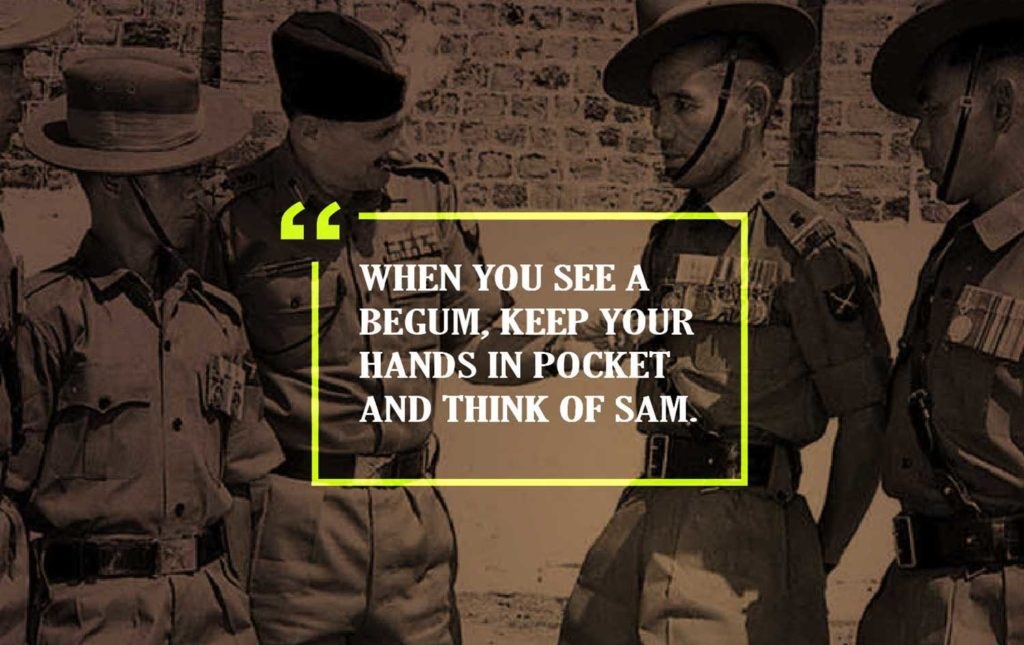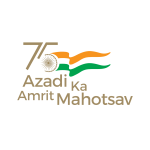
Field Marshal Sam Manekshaw,
The Legend Who Was India’s Greatest General
“Gentlemen, I have arrived and there will be no withdrawal without written orders and these orders shall never be issued.”-Sam Manekshaw
Field Marshal Sam Manekshaw, arguably India’s greatest general. An ideal soldier who serve as the Chief of the Army Staff, he is best recalled as the man who master mind India’s victory in the Indo-Pakistan war of 1971 – that led to the salvation of Bangladesh.
The first Indian army officer to be promoted to the highest military rank of Field Marshal, Sam Manekshaw travelled the world, led the Indian Army and fought in five wars. In the end, he settled in the serene Nilgiri town of Coonoor with his wife Siloo.
Here that, he spent the last three decades of his life – before passing away in 2008.
On his birth anniversary, we celebrate the legend of Sam Bahadur (as the brave heart was affectionately called), yet little-known, stories from his illustrious life.
Sam initially wanted to study medicine:
Born on April 3, 1914, to Parsi parents, Hormusji Manekshaw and Heerabai, Sam Hormusji Framji Jamshedji Manekshaw grew up in Punjab.Sam was initially given the name Cyprus, before it was switched by a relative aunt. She had listened of a Parsi named Cyrus being punished to jail and did not want her nephew to have a name that could prove to be unlucky!
Sam was completed his education from Nainital’s Sherwood College with distinction. A good student, he wanted to go to London to search medicine like his gynaecologist father. But Hormusji refused, saying that Sam was too young to stay outland on his own.
In an act of revolt, an angry Sam applied for the Indian Military Academy (IMA) entrance examination. He got through, and on October 1, 1932, became a part of the first batch of 40 cadets to be selected for the Indian Military Academy, Dehradun.
“Mr Mackintosh”:
After being appointed, Sam was attached to the 2 Royal Scots. Since his name was a tongue-twister for most of the officers of the Scottish Regiment, they concise it to “Mr Mackintosh”!
Nearly a decade later, the outbreak of World War II led to Japanese forces invading Burma, and, in February 1942, Manekshaw saw action during the battle of Sittang bridge. During a counter-incursion, he was hit nine times in the stomach by machine-gun fire – but continued to lead his soldiers. His ideal leadership ultimately clinched the conclusive Sittang bridge for the Allies.
When the Divisional Commander, Sir David Tennent Cowan, heard of Manekshaw’s bravery, he rushed to the battle site, whipped off his own Military Cross ribbon and pinned it on the wounded officer’s chest, saying: “A dead person cannot be awarded a Military Cross.
When being shot nine times didn’t stop him from jocking:
One of the most famous narrative about Manekshaw is also related to the aforesaid time when he was shot at nine times in Burma yet magically preserver.
So grievous were his injuries that the surgeon operating on him was going to give up on his bullet charade body until he asked Sam what had happened.
To this, the wounded soldier retorted in true Manekshaw-style, “Nothing happened, I was kicked by a donkey.” He did indeed, going on to befall the 8th Chief of Staff of the Indian Army.
His journey to becoming one of the most
Celebrated generals of the Indian Army:
As a military chief, Manekshaw was able to demand constancy from his soldiers because his own was never in doubt. His famed career comprise in four decades and five wars, start with the British Indian Army during World War II and elevated in the crucial 1971 triumph that led to the birth of Bangladesh.
Such was the respect Maneskshaw commanded in the military world that when he visited Nepal after release Bangladesh, King Mahendra conferred on him the title and sword of Honorary General of the Royal Nepal Army. This was the starting of a tradition whereby the chiefs of the two neighbouring countries are made generals in each others’ armies.
One of the most renowned generals of the Indian Army, Maneksha was awarded the Padma Vibhushan in 1972 and became the first Indian Army officer to be promoted to the rank of field marshal in January 1973.
Manekshaw and the Gorkhas:
Although Manekshaw never actually commanded any Gorkha restrain, he was an avowed adorer of Gorkha soldiers. He could never actually decide which of the two regiment (5 or 8 Gorkhas) he liked more, so he carried two lanyards representing both restrains. In fact, so impressed was he by the fighting skills and courage of the brave Gorkhas, that he famously said,
“If a soldier says he is not afraid of death, he is either lying or he is a Gorkha.”
This deep appreciation was energetically returned by the Gorkhalis — Sam Bahadur be a popular household name among the community. There’s also an interesting story about the origin of ‘Sam Bahadur’, the moniker Manekshaw was lovingly known by.
Once, a Gorka soldier named Harka Bahadur Gurung, serving in the Quarter Guard (a ceremonial guard mounted at the entry of a military unit) was confront by Manekshaw, who barked: “Mero naam ke ho? (What’s my name?)”.
Without batting an eyelid, the Gorkha belted out, “Sam Bahadur, saab.” The military hero loved the quick retort and the name stuck.
Manekshaw was a leader who Irreverent and diligently man:
Manekshaw was a crucial leader and able listener who was always thoughtful to those under his command. Almost always finishing his own work in an hour, he would often spend the rest of his time floating from one office to another, dropping in on harried juniors and eagerly helping them with their acts. In fact, his colourful language and inconsequent jokes were known to set off tidal waves of amusement through the army headquarters.
The charismatic General also rarely stood on ceremony. As Chairman Chiefs of Staff Committee once said, it was Manekshaw’s plain-speak that helped achieve ‘jointness’ among the three services. This was evidenced by the synergised operations that resulted in the Indian Army achieving what no other army has done since World War II — realeasing a nation.
In fact, when he was asked to go to Dhaka to accept the surrender of the Pakistani forces, Manekshaw denied the honour, saying that it belonged to the eastern army commander, Lieutenant General Jagjit Singh Aurora. This affectation illustrate why he was respected by all who served under or came into contact with him.
The origination of Bangladesh and its relation to
Manekshaw’s motorcycle:
A story few people know is that, at the time of the Partition, Manekshaw and Agha Muhammad Yahya Khan (the third President of Pakistan) used to work together on the staff of Field Marshal Sir Claude Auchinleck. Their job was to help out with the additional administrative duties that Partition brought along with it.
After division, when the two military officers separated ways, Yahya offered to buy Manekshaw’s red James motorcycle. He promised to send over a princely sum of Rs 1000 from Pakistan. Manekshaw agreed and Yahya took the bike with him.
However, as it turns out, Yahya never got around to sending the payment. After India’s conquest in the 1971 and the Instrument of Surrender being signed on December 16, Manekshaw was heard saying,
“Yahya never paid me the Rs. 1000 for my motorbike, but now he has paid with half his country.”
Unfazed by political pressure,
he never shied away from standing his ground:
Manekshaw with Indira Gandhi
Excellently mustachioed, dapper and eccentric, Manekshaw was a man insuperable to political pressure. He once concluded,
“I wonder whether those of our political masters who have been put in charge of the defence of the country can distinguish a mortar from a motor; a gun from a howitzer; a guerrilla from a gorilla, although a great many resemble the latter.”
From fighting off the government’s attempt to downsize the army (in what came to be known as Plan 100) to frequent clashes with defence minister VK Krishna Menon, Manekshaw’s razor-sharp wit almost landed him in trouble on several occasions.
But he was saved by the fact that no one ever doubted that he would uphold the vow he had taken while joining the army. As he said while giving the inaugural Field Marshal KM Cariappa memorial lecture in 1996,
“There is a very thin line between being dismissed and becoming a field marshal.”
Talking of his courage in standing up to the polity, its impossible to forget his ‘audacity’ in looking straight into the eyes of an all-powerful prime minister (Indira Gandhi) and steadfastly denying to follow her orders of launching immediate military operations against East Pakistan. Pointing out that it would be untimely and inappropriate, he also told her in no uncertain terms that if she did not concur, she could appoint a different general.
Sadly, it was this ingenuous behaviour that led to Manekshaw not being accorded the benefits and status due to a Field Marshal for much of his life. In fact, when he died, none of the three Service Chiefs attended the burial to pay their last respects. Nor did the then Prime Minister or the Defence Minister.
A legend who pale gracefully into retirement, Field Marshal Sam Manekshaw was especial soldier whose first-class military leadership uplifted an Indian Army that stood crest fallen after the 1962 Chinese debacle. Its time we gave him the respect and honour he deserves.
Jai Hind🇮🇳Jai Bharat









